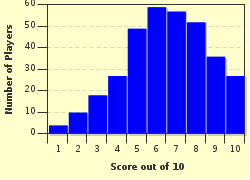Quiz Answer Key and Fun Facts
1. We begin our Irish tour in the most obvious place, Dublin. The city became the capital of Ireland in 1922 with the establishment of the Irish Free State after the split with Britain. It is home to many statues and monuments, but which of the following will you NOT see?
2. In the south east of Ireland is a county that was the site of a Norman invasion in 1169. It was also one of the first areas to be Christianised in the 5th century. Which county is this?
3. There is a place in south east Ireland that is synonymous with a particular industry. What is the name of this city that should be crystal clear to you?
4. Inland from County Waterford is an area known as the Golden Vale. Which of the named counties does not include any part of this beautiful area?
5. County Kerry contains the most westerly point of both mainland Ireland and of Europe. It lies at the tip of the Dingle Peninsula, an area of Ireland that has been inhabited for 6000 years. Where are we?
6. The Irish Province of Connacht is made up of five counties. Leitrim, Sligo, Mayo, Roscommon and Galway. They all have a coastline, except for one. Which is the only landlocked county in the province?
7. North of the province of Connacht is Ulster. This province is composed of nine counties. In terms of the number of counties, it is the second largest of the four Irish provinces. Which is the largest county in Ulster?
8. Moving into Northern Ireland, and so into part of the UK, we travel to County Antrim. Here can be found the Giant's Causeway. According to legend, it was built by a giant so he could rescue his wife who had been taken by Scottish giants.
9. Towards the southeastern corner of Northern Ireland lies a range of granite mountains in County Down. What is the name of this range of mountains?
10. At the boundary between the counties of Louth and Meath lies the town of Drogheda. Prior to 1898 and the introduction of the Local Government (Ireland) Act, it was split between the two counties. In 1690, just to the west of the town, a battle took place. What name does history give this conflict?
Source: Author
romeomikegolf
This quiz was reviewed by FunTrivia editor
Exit10 before going online.
Any errors found in FunTrivia content are routinely corrected through our feedback system.

